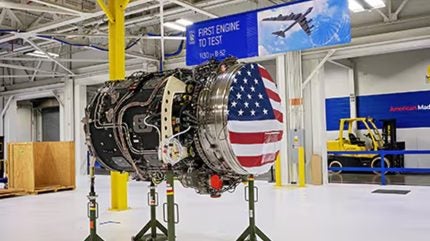
Rolls-Royce has taken a step forward in its F130 engine testing programme, initiating sea-level tests at its facility in Indianapolis.
This latest phase is important for developing the F130 engine, which is set to power the United States Air Force’s B-52J Stratofortress. The testing in the newly upgraded Test Cell 114 represents an investment in manufacturing, part of Rolls-Royce’s $1bn modernisation effort at its Indianapolis facility.
Additionally, Rolls-Royce has completed its Rapid Twin Pod Tests at NASA Stennis Space Center, marking the first time the F130 engines have been tested in the dual-pod configuration used by the B-52 aircraft. These tests have provided performance data, confirming Rolls-Royce’s earlier predictions and enhancing the engine’s integration process. This validation of performance, particularly under crosswind conditions, is important for meeting the Air Force’s requirements.
In 2023, Rolls-Royce advanced its F130 engine programme, essential for modernising the US Air Force’s B-52 Stratofortress. In March 2023, the tests validated the dual-pod engine configuration and digital controls.
The F130 engine, derived from the Rolls-Royce BR family, is designed to extend the B-52’s operational life by 30 years. With more than 1,000 engines globally, the F130 is anticipated to deliver improvements.
In other recent Rolls-Royce engine developments, Japan’s Maritime Self-Defense Force selected Rolls-Royce’s MT30 engines for its new Aegis System-equipped vessels, marking the first global use of twin MT30-powered hybrid electro-mechanical propulsion.
Rolls-Royce’s commitment to this project focuses on bolstering US manufacturing capabilities. As the F130 engines move closer to complete production and integration, the company continues to collaborate closely with Boeing and the Air Force to meet programme milestones and ensure the continued effectiveness of the B-52 fleet.




